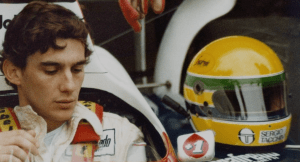Oscar-winning filmmaker Asif Kapadia has revealed that he uses the skillset he previously perfected making commercials to get his feature-length projects across the line.
Kapadia, who made his name in the film world with a trilogy of biography documentaries Senna (2010), the Oscar-winning Amy (2015), and Diego Maradona (2019), was speaking at Cannes Lions, when he explained his commercial mindset:
“The work I’ve done in commercials has helped me make the films I make. Traditionally with a movie or drama, you write a script, spend years developing it, but because of the number of pitches you have to do when you meet people [making commercials], or you have a script and you have to visualize it, cut a really interesting deck or a sizzle reel, all of those tricks I learned while doing the odd commercial, I bring into movies.
“Whenever I make a film now, I always cut a really interesting short film, make a really interesting deck, all of that is traditional commercial-pitching, but most film people don’t do it. It starts with me making a short film, then we raise the money, then I have a deck that is very visual, and that process ends up becoming a film which becomes a trailer which becomes a short moment, that might end up on some social media app. That process for commercials, I’m using to make movies.”
Asif Kapadia’s documentary ‘Senna’
Amazon Prime
Kapadia referenced his own distinctive style of filmmaking, first seen to award-winning effect in his film about the late Brazilian racing driver. “When I make a film, how can I make it unique? With Senna, the idea was there were no talking heads.”
For Amy – his feature exploring the life and death of London singer Amy Winehouse – he took a different approach: “How do I get Amy’s point of view across? It came through in her lyrics. Everyone knew the songs, but no one knew what she was actually saying and how personal they were, so putting the lyrics on screen meant you could understand the words in a way you never did before.”
Kapadia shared that while big brand partnerships often want him to work his filmmaking magic on their products, they often try to recruit him too late in the process. “Working with archive takes time and money. Amy and Senna took about five years to make,” he explained.
“I find it’s the other way round. We do something in a certain style on a feature film, and then people copy that in a style that works for commercials, which is fine – archive-looking material that’s been constructed.
“Everyone steals from everyone else, don’t they? It’s whatever works. It’s all been done. Nothing’s original. Things change, budgets change, times change, and you use whatever you can to create something you think is unique. In my mind, I’m doing something different but someone’s probably done it before.”

